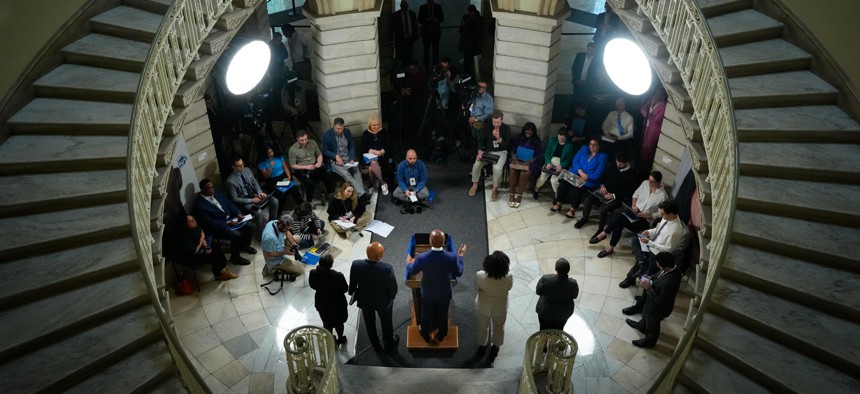New York City’s newly released executive budget – the largest in the city’s history – reflects Mayor Eric Adams’ latest plans for the city’s finances. But anyone invested in the state of the city government’s fiscal health should be careful when interpreting the latest numbers.
In a new report published by the Manhattan Institute, I show how the size of New York City’s fiscal problem is much bigger than what traditional budget analysis will suggest. While annual budgets present forward-looking plans, the city’s financial statements demonstrate how it has actually spent its money, offering a more complete and sobering perspective.
The creation of the city’s budget is a dynamic and iterative process that can be difficult to follow, especially when projections often change and even vary depending on which New York City office you follow. An analysis by City & State shows how throughout this process revenue projections consistently vary between the City Council and City Hall, with the former tending to be more optimistic in their projections. Even more differences come into play when you also look at estimates produced by the Independent Budget Office and the city comptroller’s office, the latter of which produces the city’s annual financial reports.
Why so many numbers? Discrepancies in budget projections provide a reminder to reflect on the purpose – and limitations – of financial analysis.
Budgets are merely one tool for mapping out the financial situation for the city. It’s important to remember that maps of city finances are a representation of reality, not reality itself. While budgets help plan out future public spending, city financial reports are another tool to get a better understanding of how money is actually spent at the end of each fiscal year.
The executive budget doesn’t provide the full picture for several reasons. First, the budget is subject to changes based on shifting economic and fiscal conditions, as well as fluctuating administrative priorities. For instance, the new executive budget reflects adjustments made since the preliminary budget proposal was released in January, and didn’t implement some of the expected budget cuts.
The recently released executive budget is just one step along the path towards the production of the final budget for fiscal year 2024, which is due to be passed before July. Many weeks of budget hearings and negotiations stand between the current and final budgets. Even then, the final budget will just be a planning document. It does not provide the full picture of city finances.
Using the city’s financial statements, on the other hand, I find that New York City’s fiscal health has been deteriorating for years and is likely worse than what city budgets portray. Between fiscal years 2006 and 2021, NYC has only been able to cover 100% of expenses with revenues in three of those years. This means that the city has been accumulating operational deficits – when city expenses surpass revenues – for many years, regardless of which party has held office.
Adams’ executive budget projects outyear gaps starting in fiscal year 2025, which is concerning but doesn’t raise as many alarms as if the city were to face a shortfall tomorrow. The city is required by law to balance its budget and the mayor accomplishes this goal with the plans outlined for fiscal year 2024, but not the years beyond that. This highlights the difference between conventional budget shortfalls and operational deficits. Although New York City does not currently face any budget shortfalls as projected by city budgets, it has consistently faced operational deficits as revealed by its financial statements.
This is just one example of how financial statement analysis can shed more light on the city’s fiscal health than by focusing on the city’s budget alone.
Experience suggests that New York City faces structural operational budget gaps, largely driven by unfunded long-term liabilities, especially when it comes to public pensions and other post-employment benefits. Additionally, the city faces a financial squeeze as Covid-related federal aid diminishes and as employment and property tax revenue remain sluggish.
Although we won’t know exactly how realistic Mayor Adams’ budget is until the city’s fiscal year 2024 financial statement is released over a year from now, what we do know is that budgets should not provide the final say on how New York City’s finances are doing.
Olivia Gonzalez is an economics PhD candidate at George Mason University and author of the Manhattan Institute report, “Fiscal Health Lessons for New York City.”


